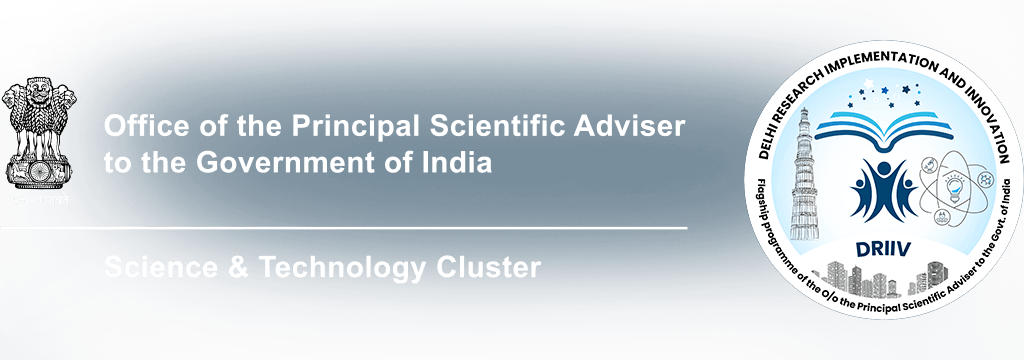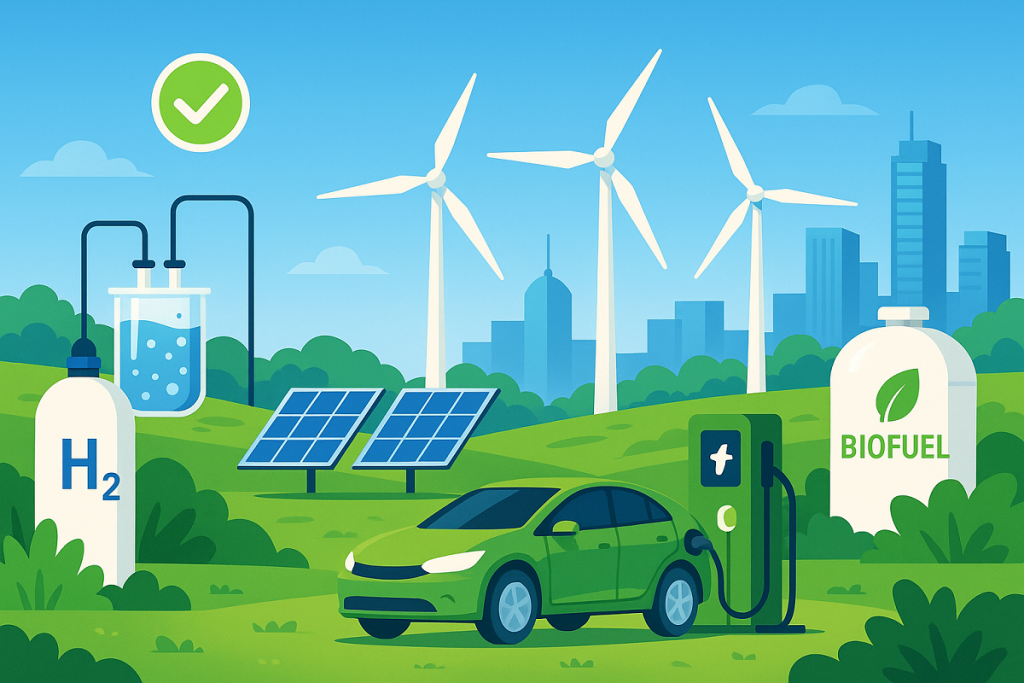As the world moves towards a cleaner and more sustainable future, technologies like Green Hydrogen, Electric Mobility, and Renewable Energy Integration are leading the way. At DRIIV, we believe in supporting innovative solutions that help achieve Carbon Neutrality and promote sustainable living.
In this blog, we’ll explore how these clean energy technologies are changing the way we produce and use energy — and why they matter for our future.
What Is Green Hydrogen?
Green Hydrogen is a type of hydrogen fuel made using renewable energy sources like solar and wind. Unlike traditional hydrogen production, which uses fossil fuels and emits carbon dioxide, Green Hydrogen is clean and sustainable.
It is created through a process called electrolysis, where water is split into hydrogen and oxygen using electricity from renewable sources. The result is a fuel that can power vehicles, factories, and even entire cities — without harming the environment.
The Goal: Carbon Neutrality
Carbon Neutrality means balancing the amount of carbon dioxide emitted into the atmosphere with an equal amount removed or offset. Reaching this goal is critical in the fight against climate change.
DRIIV supports the development of clean technologies like Green Hydrogen, Sustainable Biofuels, and Energy Efficiency Technologies to reduce greenhouse gas emissions across sectors like transport, energy, and industry. These solutions bring us closer to a world where energy is clean, affordable, and carbon-free.
The Rise of Electric Mobility
Electric Mobility is the use of electric-powered vehicles, including cars, buses, bikes, and trains. These vehicles produce zero emissions when running and are powered by batteries or hydrogen fuel cells.
With better charging infrastructure, falling battery prices, and government support, Electric Mobility is becoming a practical option for more people. At DRIIV, we work with partners to support EV innovation and make clean transportation more accessible and efficient.
Renewable Energy Integration: Powering the Grid
Renewable Energy Integration refers to the process of connecting sources like solar and wind power into the electricity grid. Since renewables depend on natural conditions, such as sunlight and wind, managing their supply can be challenging.
Modern technologies, such as smart grids, battery storage, and forecasting tools, help integrate these variable energy sources smoothly. This allows us to rely less on coal and gas and more on clean, unlimited energy from nature.
Advancing Energy Efficiency Technologies
Using energy more efficiently is one of the easiest and most cost-effective ways to reduce emissions. Energy Efficiency Technologies help us do more with less — lighting systems that use less power, smart buildings that consume less energy, and industrial processes that waste less heat.
DRIIV promotes innovations that improve energy efficiency across sectors. These technologies lower energy bills, reduce pollution, and help conserve natural resources.
The Role of Sustainable Biofuels
Sustainable Biofuels are fuels made from organic materials such as plant waste, agricultural residue, or algae. Unlike fossil fuels, these do not add extra carbon dioxide to the atmosphere when burned, as the plants used in their production absorb CO₂ while growing.
These biofuels can power vehicles, planes, and machines while offering a renewable, eco-friendly alternative to petrol and diesel. DRIIV supports the research and development of Sustainable Biofuels to diversify our clean energy options.
Why These Technologies Matter
Each of these clean technologies plays a vital role in reducing carbon emissions and achieving Carbon Neutrality:
- Green Hydrogen offers a powerful, clean fuel alternative.
- Electric Mobility cuts transportation emissions.
- Renewable Energy Integration brings clean power into homes and businesses.
- Energy Efficiency Technologies reduce energy waste.
- Sustainable Biofuels provide eco-friendly alternatives to fossil fuels.
Together, they form a roadmap toward a sustainable future.
FAQs
Q1: Why is Green Hydrogen important?
Green Hydrogen is a clean energy source that doesn’t emit carbon dioxide. It can power heavy industries and vehicles, making it essential for a carbon-free future.
Q2: What does Carbon Neutrality mean for the average person?
Carbon Neutrality means living in a way that doesn’t add extra carbon to the environment. This includes using clean energy, driving electric vehicles, and conserving energy at home.
Q3: Is Electric Mobility better for the environment?
Yes, Electric Mobility reduces air pollution and greenhouse gas emissions, especially when powered by renewable energy sources.
Q4: How does Renewable Energy Integration work?
It involves adding renewable sources like solar and wind into the existing power grid and managing them efficiently using smart technologies.
Q5: Are Energy Efficiency Technologies expensive?
Many efficiency solutions save money in the long run. They reduce energy bills and maintenance costs, making them a smart investment for homes and businesses.
Q6: Can Sustainable Biofuels replace petrol and diesel?
Yes, Sustainable Biofuels can be used in existing engines and offer a cleaner alternative to traditional fuels, especially in transport and aviation.
Final Thoughts
At DRIIV, we believe that collaboration and innovation are key to building a cleaner, greener future. By supporting technologies like Green Hydrogen, Electric Mobility, and Sustainable Biofuels, we help pave the way for a Carbon Neutral India.
Together, with better Renewable Energy Integration and Energy Efficiency Technologies, we can power the future — responsibly and sustainably.


